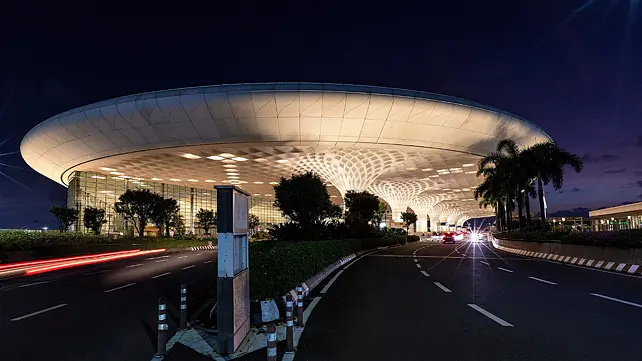
Mumbai’s Chhatrapati Shivaji Maharaj International Airport (CSMIA) has entirely switched to green sources for its energy consumption needs, making it a 100% sustainable airport. The sustainable initiatives undertaken by CSMIA are part of the airport’s efforts to reduce its carbon footprint on its journey towards ‘Net Zero’ emissions. CSMIA has also prepared a roadmap to achieve “Net Zero Carbon Emission” by 2029.
CSMIA has been running solely on green energy since April 2022, and 5% of the airport’s electricity requirement is met through its onsite solar generation, while the rest 95% is obtained from other green sources such as hydro & wind energy. CSMIA witnessed an increase in natural energy procurement, with 57% green consumption in April 2022 to a whopping 98% between May to July. It finally attained the landmark 100% utilisation of renewable energy sources in August 2022. CSMIA now generates 4.66 MW from its rooftop solar power plants.
CSMIA enhanced its capacity usage of green energy in April 2022 and deployed a 10Kwp Hybrid SolarMill consisting of 2Kwp TurboMill (3 Savonious type VAWT) and 8Kwp Solar PV modules with an estimated minimum energy generation of 36Kwh/day. This first-of-its-kind, fully integrated, hybrid renewable energy product harnesses solar and wind energy combined to generate electricity. This green transition to renewable energy ensures a reduction of around 1.2 lakh tonne of CO2 equivalent every year, thus moving closer to CSMIA’s target of Net Zero by the year 2029.
CSMIA plans to reduce approximately 3000 tonne of Green House Gas (GHG) emissions by converting belt-driven fans of Air Handling Units with EC fans, replacing cooling tower fills with energy-efficient fills, replacement of conventional lamps with LEDs to conserve energy further. The airport also aims to adopt an IoT-based temperature monitoring system at Terminal-2 to optimise the energy consumption of the air conditioning system through technological upgradation in its pipeline and conversion of conventional fuel vehicles with electric vehicles (EV).
Also Read
AAI Announces Expansion Plans For Trichy Airport